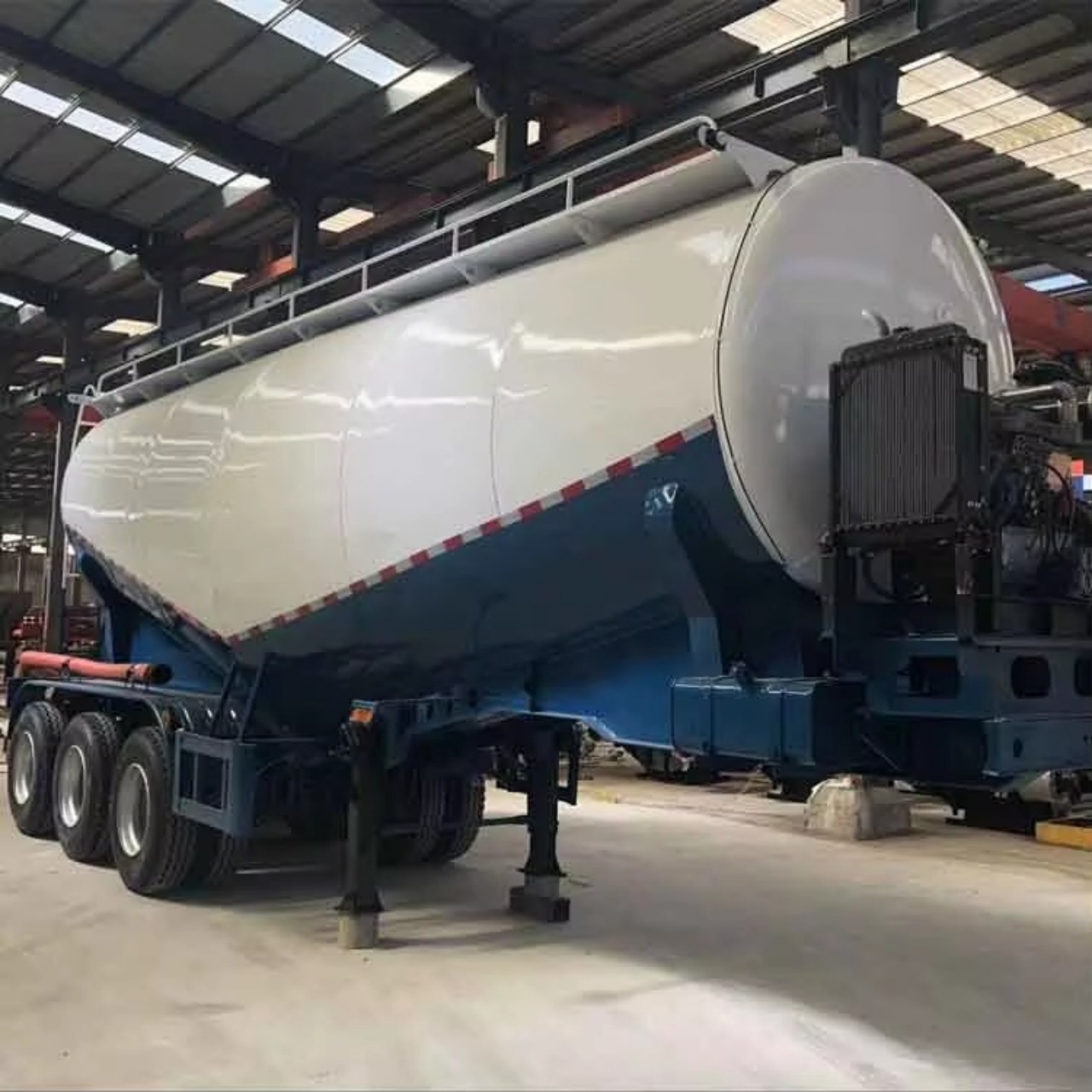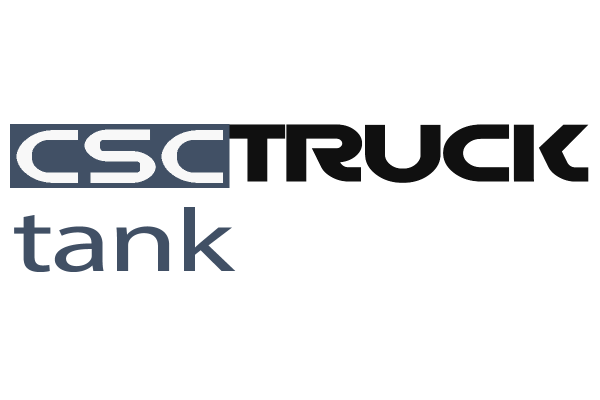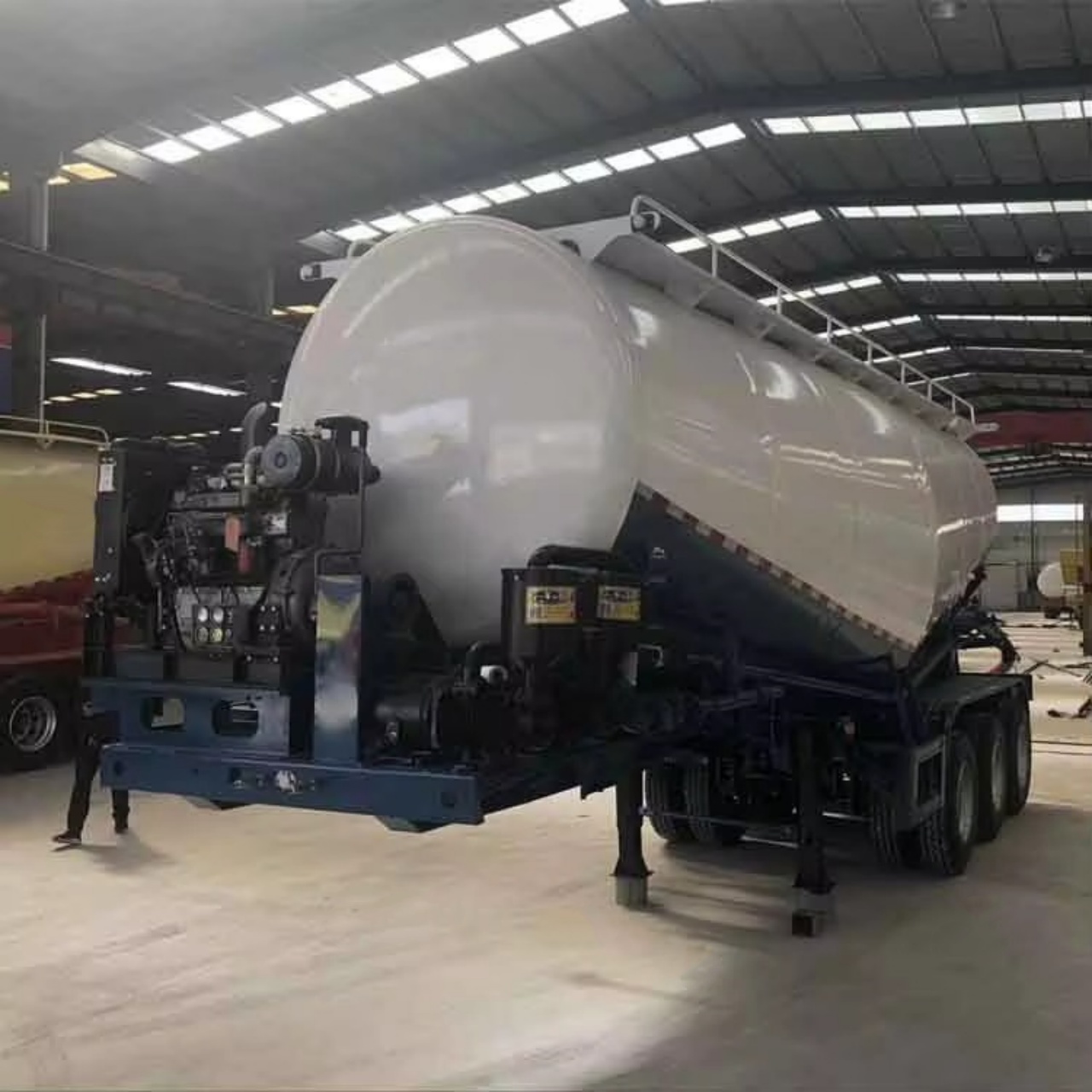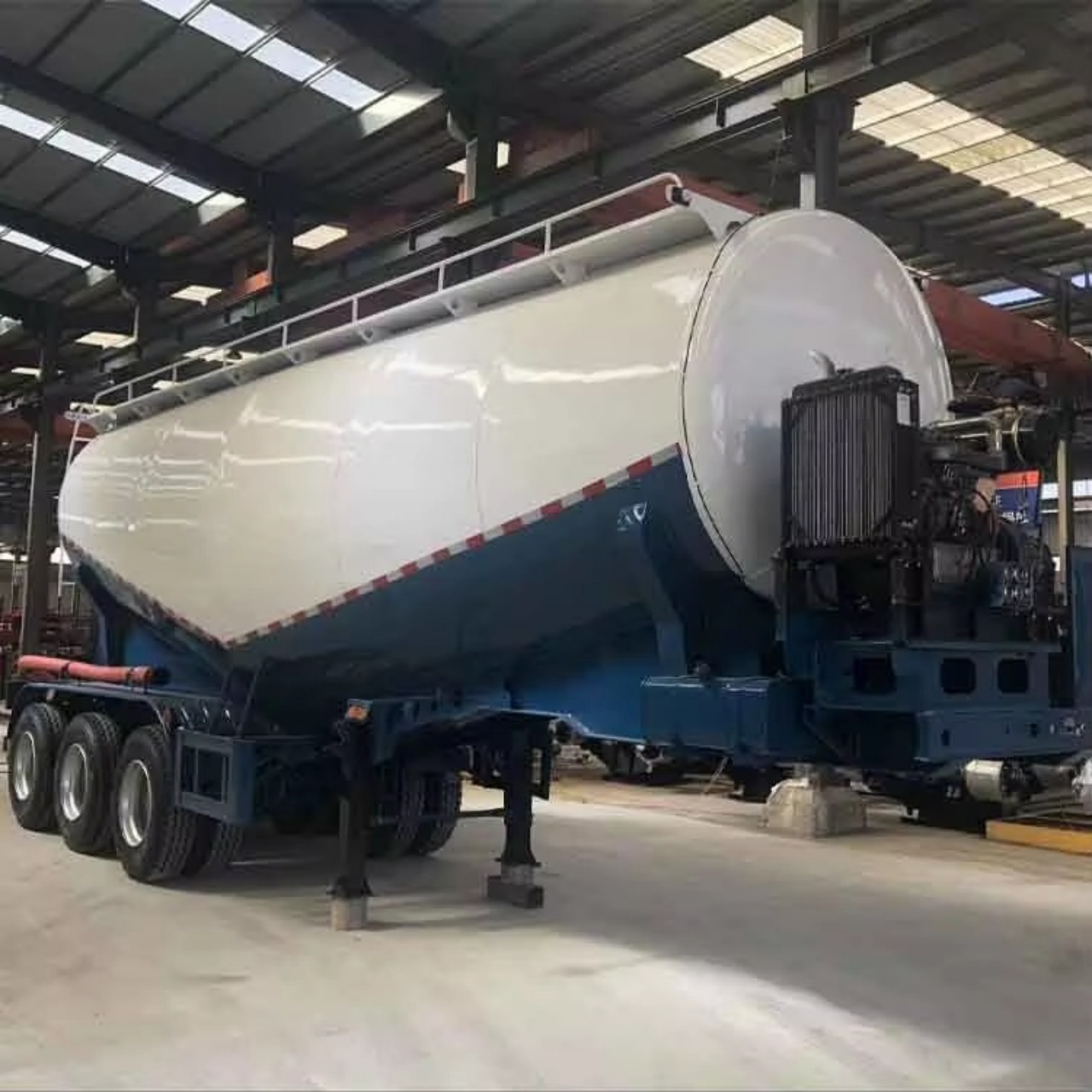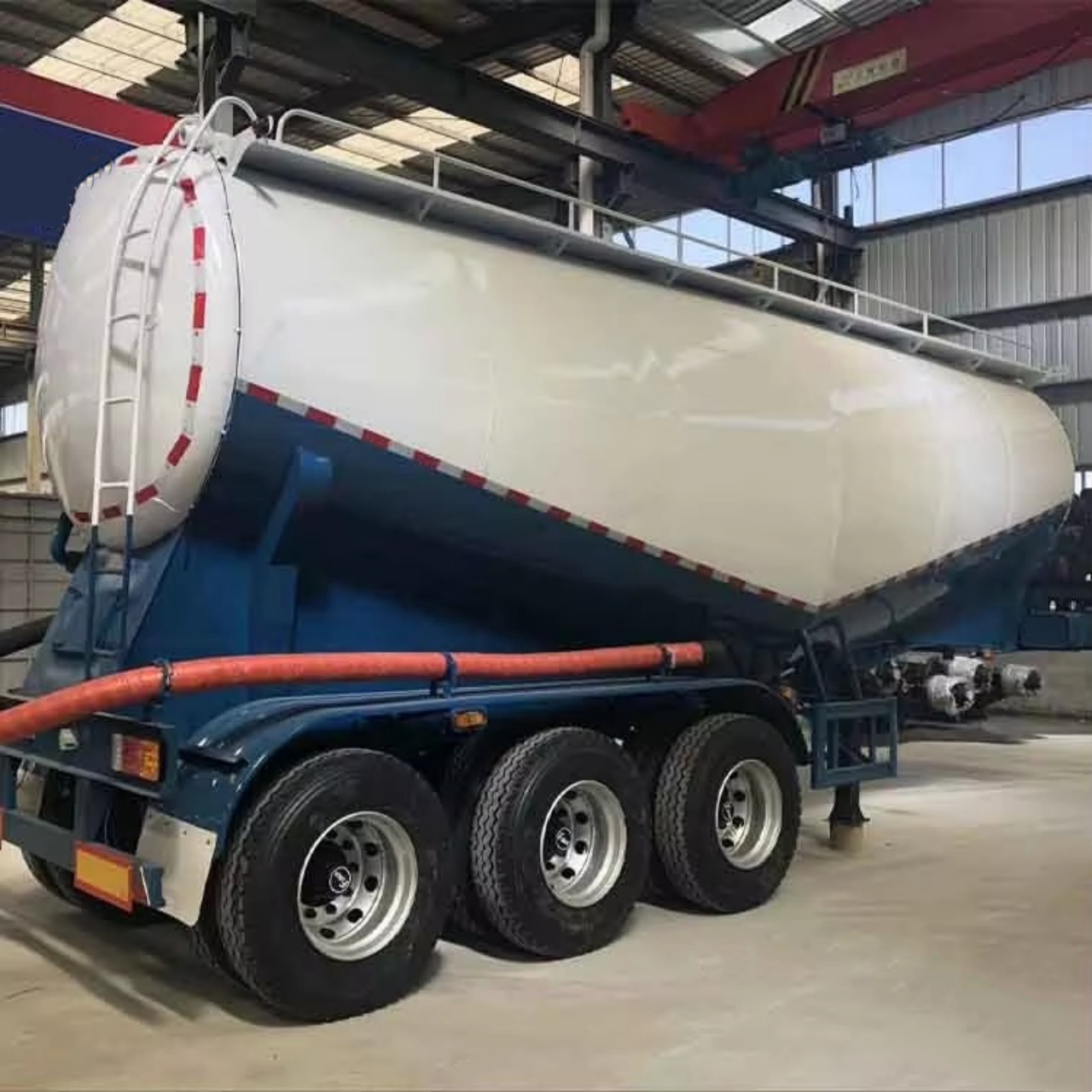Dry bulk trailers, also known as pneumatic trailers, are specialized vehicles designed to transport dry, free-flowing products such as cement, flour, sand, plastic pellets, and other similar materials. These trailers are commonly used in the agriculture, construction, food processing, and plastics industries. One of the most critical aspects of using a dry bulk trailer is ensuring it is properly and safely loaded. In this article, we’ll explore the step-by-step process of loading a dry bulk trailer, the equipment involved, and the best practices to ensure safety, efficiency, and product integrity.
Understanding Dry Bulk Trailers
Before diving into the loading process, it’s essential to understand the basic design of a dry bulk trailer. These trailers are generally cylindrical, made of aluminum or stainless steel, and use pressurized air to unload material through hoses and valves. The interior of the trailer is divided into compartments or hoppers, which helps with weight distribution and allows for unloading different types of materials if necessary.
Dry bulk trailers typically range from 1,000 to 2,000 cubic feet in capacity, depending on the product and vehicle configuration. A blower system (either truck-mounted or site-based) is used during unloading, but loading usually relies on gravity or mechanical conveyors.
Preparation Before Loading
1. Ensure Cleanliness and Compatibility
Before any loading begins, the trailer must be thoroughly cleaned, especially if switching between different types of products. Residual materials can contaminate new loads, which is particularly critical for food-grade or pharmaceutical products.
- Inspect all internal surfaces.
- Verify the cleanliness of hoppers, valves, and piping.
- Confirm that the trailer is certified for the material being loaded (especially for hazardous or food-grade materials).
2. Check Equipment Functionality
All components should be inspected for proper function:
- Hatch covers and gaskets must seal correctly.
- Valves should open and close without resistance.
- Pressure relief valves must be functional to prevent over-pressurization during unloading.
3. Review Safety Protocols
Loading involves pressurized systems, moving equipment, and potentially hazardous materials. Operators should wear appropriate PPE, such as:
- Hard hats
- Safety glasses
- Gloves
- Dust masks or respirators (if dealing with fine powders)
Ensure that emergency shutoffs and safety stations (eyewash, showers) are available.
Step-by-Step Loading Process
1. Position the Trailer
The trailer must be properly positioned at the loading site. The driver should back the trailer into place, ensuring the hatches are aligned with the loading spout or conveyor. Chock the wheels and set the parking brakes to prevent movement.
2. Open the Hatch Covers
Once positioned, the top hatch covers are opened. These hatches are typically secured with clamps or a bolted ring. Carefully loosen the seals to prevent damage and avoid releasing trapped pressure.
3. Attach Loading Equipment
Depending on the facility, the material is transferred into the trailer via one of the following methods:
- Gravity Drop from silos through spouts.
- Screw Conveyors or Belt Feeders that move material into the hatches.
- Pneumatic Conveying Systems for finer powders or when contamination control is critical.
Ensure the loading spout is correctly inserted and secured to avoid dust or product loss. For dusty materials, dust collection systems may be used to maintain clean air.
4. Begin Loading
Start the loading process slowly to prevent overfilling or damaging the trailer. The operator must monitor:
- The material flow rate.
- The trailer’s internal pressure (if pneumatically loaded).
- Visual indicators or level gauges.
Loading typically occurs from the front hopper to the rear to balance the weight distribution properly. A loader or operator will switch compartments manually or through a control system, depending on the sophistication of the equipment.
5. Monitor Fill Levels
Trailers can be overfilled, leading to spillage or difficult unloading. Use one or more of the following to ensure proper fill levels:
- Sight glasses or sight tubes
- Weigh scales on the trailer or facility
- Visual inspection from the top hatch (if safe to do so)
Stop loading each compartment slightly below full to allow for material expansion during transport.
6. Close Hatches and Secure Equipment
After loading, the hatches are securely closed and sealed. Check gaskets and clamps to ensure a tight, weatherproof seal. Remove the loading spout or hose and clean any residue from the trailer exterior.
Post-Loading Procedures
1. Documentation
Once the trailer is loaded and sealed, appropriate paperwork must be completed. This may include:
- Bill of lading
- Material safety data sheet (MSDS)
- Load manifest or weight certificate
- Seal numbers (for tamper-evident security)
2. Final Inspection
Do a walkaround inspection to verify:
- No spillage or leaks
- All compartments are closed and sealed
- The trailer is properly balanced, and the legal weight is not exceeded
- Safety equipment is stowed properly
3. Departing the Loading Site
Once checks are complete and documentation is finalized, the driver can depart. Driving practices should be cautious, especially if the load is heavy or has a tendency to shift during transit.
Best Practices for Safe and Efficient Loading
- Training: Only trained personnel should handle loading operations.
- Communication: Clear communication between drivers and loading personnel avoids accidents.
- Regular Maintenance: Keeping valves, seals, and hatches in good condition reduces the risk of leaks or contamination.
- Environmental Controls: Use dust collectors and enclosed systems to reduce airborne contaminants, especially in populated or indoor areas.
- Compliance: Follow DOT and OSHA regulations regarding hazardous materials, weight limits, and trailer safety.
Conclusion
Loading a dry bulk trailer is a precise operation that requires attention to safety, equipment integrity, and material characteristics. Whether handling cement, food products, or industrial powders, proper procedures help ensure that materials are loaded efficiently, transported safely, and delivered without contamination or loss. By following a standardized step-by-step approach and maintaining a high level of equipment care, operators can maximize productivity and reduce the risk of errors or accidents during the loading process.
